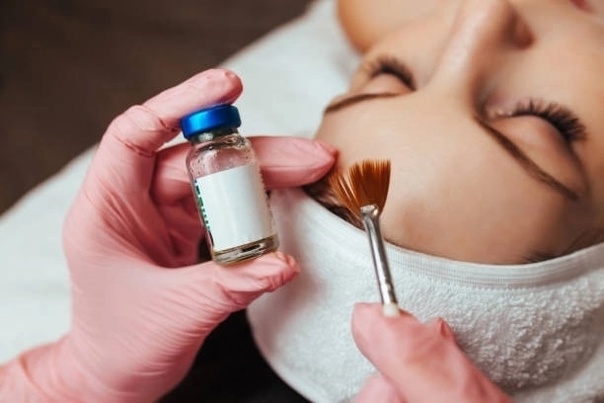Chemical peels are a popular skincare treatment used to improve the texture and appearance of the skin. They work by applying a chemical solution that exfoliates and removes the outer layers of the skin, revealing a smoother and more youthful complexion underneath. However, many individuals wonder whether chemical peels in Islamabad are safe for all skin tones. This article addresses the safety, benefits, and considerations of chemical peels for various skin tones, helping you make an informed decision.
Understanding Chemical Peels
Chemical peels are categorized based on their depth of action:
-
Superficial Peels: Light peels that exfoliate the epidermis (outer layer). Common acids: glycolic acid, lactic acid.
-
Medium Peels: Penetrate the middle layers of skin to remove damaged cells. Common acids: trichloroacetic acid (TCA), stronger glycolic acid.
-
Deep Peels: Reach deeper skin layers to treat severe imperfections. Common acids: phenol, high-concentration TCA.
How Chemical Peels Work
Chemical peels exfoliate the skin by breaking down the bonds between dead skin cells, prompting the skin to peel off naturally. This process stimulates collagen production, helping to reduce fine lines, acne scars, hyperpigmentation, and uneven texture.
However, the depth of the peel and the type of acid used are crucial, especially when considering different skin tones.
Why Skin Tone Matters
Skin tone is a significant factor when choosing the appropriate type of chemical peel. Melanin production varies among individuals, with darker skin tones containing higher levels. This makes darker skin more prone to:
-
Hyperpigmentation: Darker areas may become more pronounced.
-
Hypopigmentation: Skin may lighten unevenly.
-
Scarring: Especially in deep peels or if post-treatment care is not followed.
Therefore, selecting the right peel is essential to minimize risks and maximize results.
Are Chemical Peels Safe for Dark Skin Tones?
Dark skin tones (Fitzpatrick skin types IV-VI) require extra caution when undergoing chemical peels due to the increased risk of pigmentation changes. However, when performed by a skilled professional, they can be safe and effective.
Recommended Peels for Dark Skin:
-
Superficial Peels:
-
Glycolic Acid (20-30%): Reduces acne scars and fine lines.
-
Lactic Acid: Hydrates while gently exfoliating.
-
Mandelic Acid: Ideal for sensitive, darker skin, reducing pigmentation.
-
-
Medium Peels (Caution Required):
-
TCA (10-20%): Effective for moderate discoloration and fine lines.
-
Should be applied in a controlled setting to prevent burns and scarring.
-
-
Deep Peels (Not Recommended):
-
Phenol Peels: Can cause permanent hypopigmentation.
-
Generally avoided for darker skin tones.
-
Are Chemical Peels Safe for Light Skin Tones?
Lighter skin tones (Fitzpatrick skin types I-III) generally have fewer complications related to pigmentation. However, they are more prone to redness, peeling, and sun sensitivity after the treatment.
Recommended Peels for Light Skin:
-
Superficial Peels:
-
Salicylic Acid: Ideal for acne-prone skin.
-
Glycolic Acid (30-50%): Reduces signs of aging and sun damage.
-
-
Medium Peels:
-
TCA (20-35%): Reduces deeper wrinkles and moderate pigmentation.
-
Safe when performed by an experienced professional.
-
-
Deep Peels:
-
Phenol Peels: Effective for deep wrinkles but requires significant recovery.
-
More suitable for lighter skin types due to minimal risk of pigmentation changes.
-
Key Considerations for All Skin Tones
-
Patch Test:
Always perform a patch test to identify any adverse reactions before proceeding. -
Pre-Treatment Skincare:
-
Use sunscreen daily for at least two weeks before the peel.
-
Avoid retinoids or other exfoliants to reduce sensitivity.
-
-
Post-Treatment Care:
-
Strictly follow aftercare instructions, including moisturization and sun protection.
-
Avoid picking or peeling the skin manually.
-
-
Expert Consultation:
Choosing an experienced dermatologist is vital, as they can assess your skin type, tone, and specific concerns before recommending the most suitable peel.
Benefits of Professional Chemical Peels in Islamabad
Opting for professional chemical peels in Islamabad ensures that the procedure is tailored to your specific skin needs. Clinics with qualified dermatologists offer:
-
Personalized skin assessments.
-
High-quality chemical solutions.
-
Guidance on aftercare and follow-up treatments.
-
Reduced risk of adverse effects.
Myths and Facts About Chemical Peels
Myth 1: Chemical peels are unsafe for dark skin.
Fact: Superficial peels can be safe if chosen correctly and applied by professionals.
Myth 2: Deep peels work best for everyone.
Fact: Deep peels are not suitable for darker skin tones due to the risk of discoloration.
Myth 3: All peels cause intense peeling.
Fact: Mild peels may result in minimal flaking, while deeper peels cause more visible shedding.
What to Expect After a Chemical Peel
-
Superficial Peels: Mild redness and flaking for 3-5 days.
-
Medium Peels: Redness and moderate peeling for about a week.
-
Deep Peels: Significant peeling, swelling, and redness lasting several weeks.
Follow post-peel care instructions to minimize complications, including avoiding sun exposure and using gentle skincare products.
Final Thoughts: Choosing the Right Chemical Peel
Whether you have a light or dark complexion, chemical peels can be effective and safe when chosen correctly. Consulting a skilled dermatologist who understands the nuances of skin tones is crucial for achieving optimal results without adverse effects.
